Intel Haswell-EP Xeon 12 Core Review: E5-2650L V3 and E5-2690 V3
by Ian Cutress on November 6, 2014 9:00 AM EST- Posted in
- CPUs
- IT Computing
- Intel
- Xeon
- Enterprise
- LGA2011-3
- Haswell EP
CPU Benchmarks
The dynamics of CPU Turbo modes, both Intel and AMD, can cause concern during environments with a variable threaded workload. There is also an added issue of the motherboard remaining consistent, depending on how the motherboard manufacturer wants to add in their own boosting technologies over the ones that Intel would prefer they used. In order to remain consistent, we implement an OS-level unique high performance mode on all the CPUs we test which should override any motherboard manufacturer performance mode.
HandBrake v0.9.9: link
For HandBrake, we take two videos (a 2h20 640x266 DVD rip and a 10min double UHD 3840x4320 animation short) and convert them to x264 format in an MP4 container. Results are given in terms of the frames per second processed, and HandBrake uses as many threads as possible.
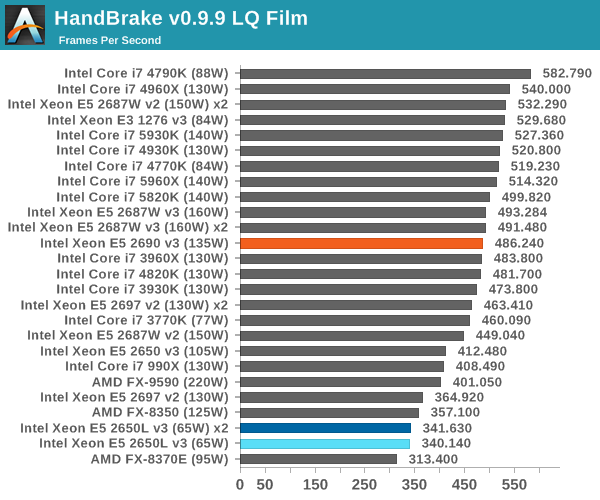

With the low single core speed of the 2650L v3, processing smaller frames can be rather slow. When the size of the frames is larger, and reside in the computational parts of the cores for longer, a better speedup is achieved. However, the 2690 v3 still wins out.
Agisoft Photoscan – 2D to 3D Image Manipulation: link
Agisoft Photoscan creates 3D models from 2D images, a process which is very computationally expensive. The algorithm is split into four distinct phases, and different phases of the model reconstruction require either fast memory, fast IPC, more cores, or even OpenCL compute devices to hand. Agisoft supplied us with a special version of the software to script the process, where we take 50 images of a stately home and convert it into a medium quality model. This benchmark typically takes around 15-20 minutes on a high end PC on the CPU alone, with GPUs reducing the time.

Photoscan is part single thread and part multithread, and the combination of the two puts the 2690 v3 well ahead of the 2650L v3 x2 despite double the cores.
Dolphin Benchmark: link
Many emulators are often bound by single thread CPU performance, and general reports tended to suggest that Haswell provided a significant boost to emulator performance. This benchmark runs a Wii program that raytraces a complex 3D scene inside the Dolphin Wii emulator. Performance on this benchmark is a good proxy of the speed of Dolphin CPU emulation, which is an intensive single core task using most aspects of a CPU. Results are given in minutes, where the Wii itself scores 17.53 minutes.
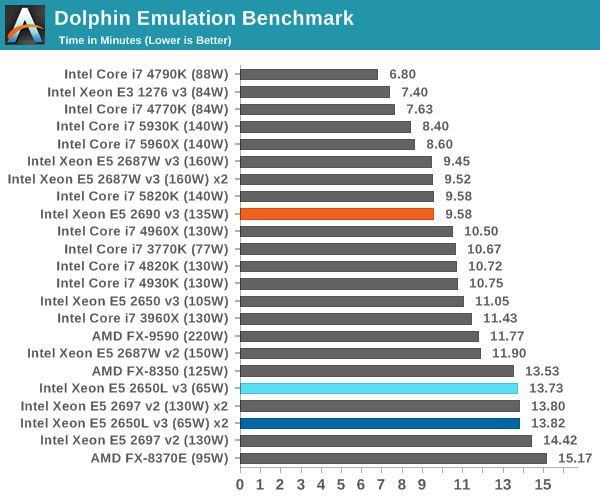
Dolphin is purely single threaded, and the 2690 v3 sits on par with the 5820K.
WinRAR 5.0.1: link
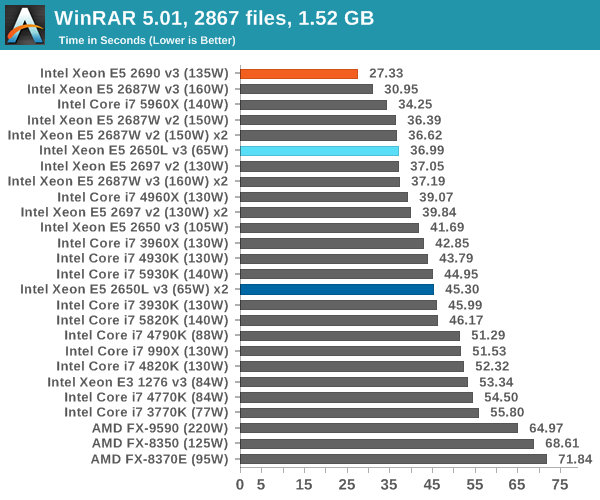
PCMark8 v2 OpenCL
A new addition to our CPU testing suite is PCMark8 v2, where we test the Work 2.0 suite in OpenCL mode.
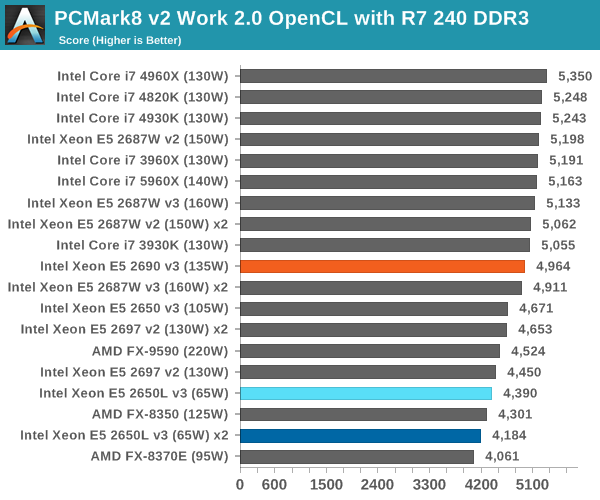
Hybrid x265
Hybrid is a new benchmark, where we take a 4K 1500 frame video and convert it into an x265 format without audio. Results are given in frames per second.
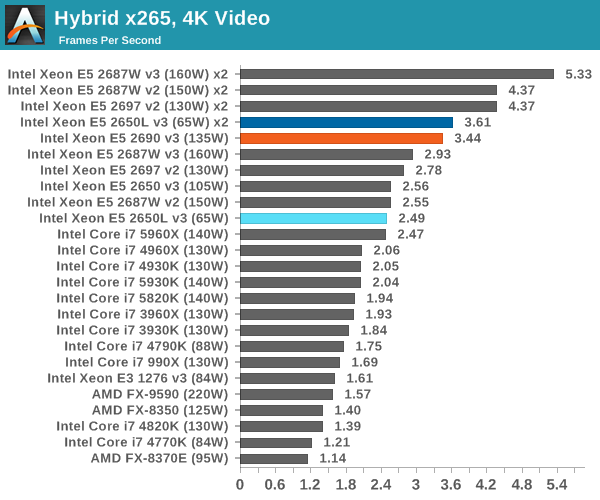
For x265 conversion, more cores rules the roost and we see the 2650L v3 x2 setup surpass the 2690 v3. Although the 0.17 FPS difference might not be worth the $600 outlay depending on how much x265 encoding you do.
Cinebench R15
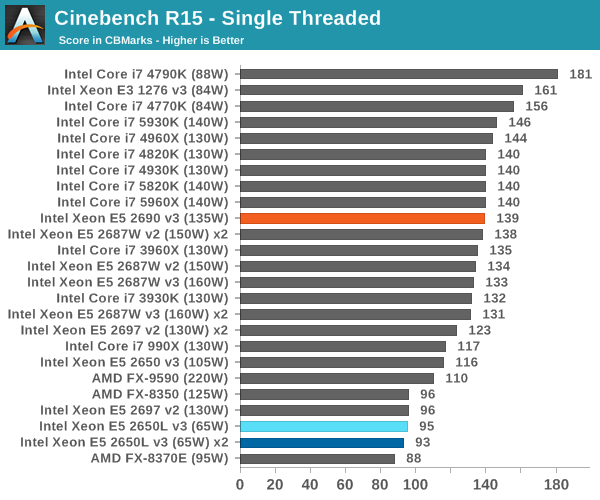
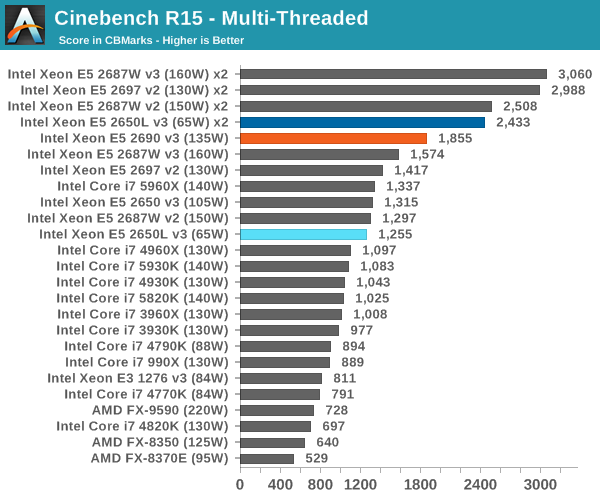
3D Particle Movement
3DPM is a self-penned benchmark, taking basic 3D movement algorithms used in Brownian Motion simulations and testing them for speed. High floating point performance, MHz and IPC wins in the single thread version, whereas the multithread version has to handle the threads and loves more cores.
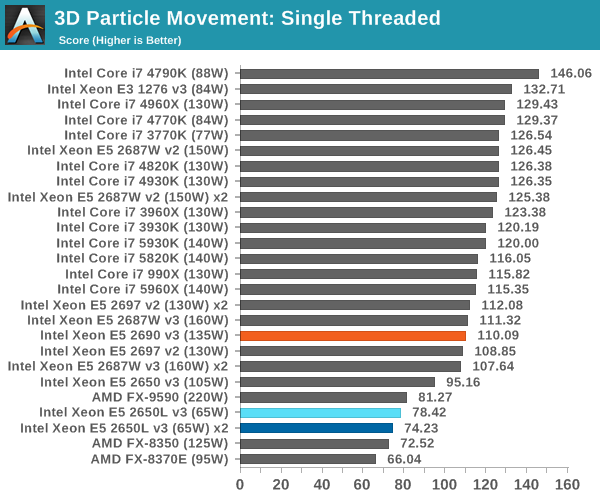

FastStone Image Viewer 4.9
FastStone is the program I use to perform quick or bulk actions on images, such as resizing, adjusting for color and cropping. In our test we take a series of 170 images in various sizes and formats and convert them all into 640x480 .gif files, maintaining the aspect ratio. FastStone does not use multithreading for this test, and results are given in seconds.
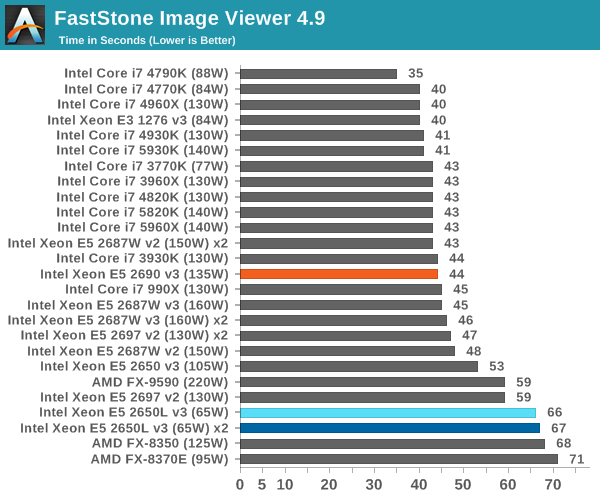
Web Benchmarks
General usability is a big factor of experience, especially as we move into the HTML5 era of web browsing. For our web benchmarks, we take four well known tests with Chrome 35 as a consistent browser.
Sunspider 1.0.2
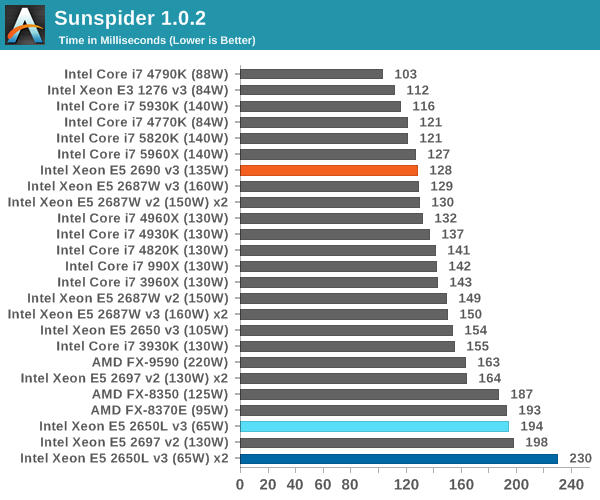
Mozilla Kraken 1.1
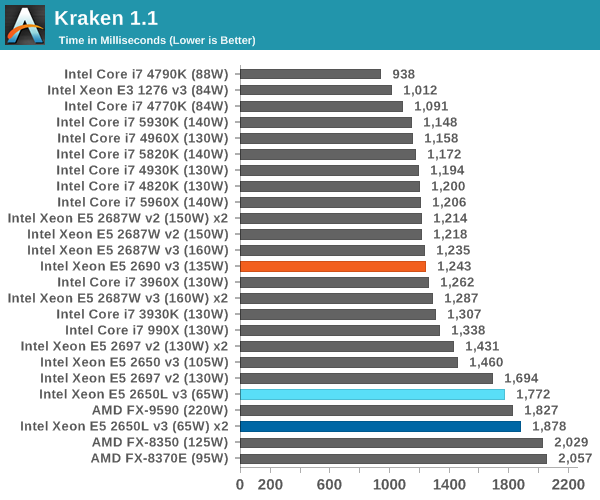
WebXPRT
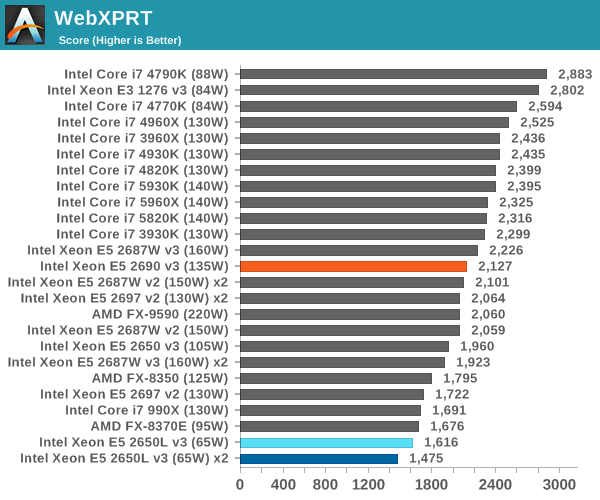
Google Octane v2











52 Comments
View All Comments
colinstu - Thursday, November 6, 2014 - link
that's what I was thinking tooFlunk - Thursday, November 6, 2014 - link
It's a bit annoying, that despite it's ability to produce 16-core behemoths, Intel is still only setting 4-core chips in it's mainstream line. There is plenty of room for product differentiation here, but I guess lack of competition means Intel doesn't have any reason to add cores.tim851 - Thursday, November 6, 2014 - link
> but I guess lack of competition means Intel doesn't have any reason to add coresYup.
That's why it's lame to be a fanboy. You want many companies to succeed in a market with good product substitution.
SuperVeloce - Friday, November 7, 2014 - link
Mainstream line does not need more than 4 HT cores. If you need more, haswell-E and haswell-EP are available to you. 5820k is low cost if you want or have need for a x99 chipset and ddr4.Black Obsidian - Friday, November 7, 2014 - link
Yeah, it's not lack of competition, it's lack of any good reason whatsoever to sell >4 cores into the mainstream market. Only a vanishingly tiny percentage of users can even fully utilize 4 cores; for those who can (and could use more), there exists both the enthusiast desktop and Xeon workstation segments.Wolfpup - Thursday, November 6, 2014 - link
This is insane. You can now have TWELVE Haswell cores FOR LESS POWER THAN MY 2004 PRESCOTT Pentium 4!That is freaking amazing.
And while it's hopeless that I'll ever get to run something like this (probably even for a sever at work, much less in a desktop PC like I'd like), it's still freaking amazing to see what's possible :-D
Shadowmaster625 - Thursday, November 6, 2014 - link
In Bioshock, why do several more expensive and newer chips only produce half the minimum framrates vs a 3770K????TeXWiller - Thursday, November 6, 2014 - link
What should be common to all those processors with lower results in Bioshock minimum frame rates is the added latency at the L3 or memory controller/system agent level. An easy test to see how much it can effect test results is to drop the frequency of the memory controller. The effect can be as much as half the performance for a 200 MHz drop, depending on the test (SPECviewperf 12 for me).SanX - Thursday, November 6, 2014 - link
Apple A8 chip costs $18Mediatek 8-core chip costs $12
Intel 8-core chip costs $600-2000
Monopoly rulezz
Guspaz - Thursday, November 6, 2014 - link
You're comparing different parts with different performance sold in different volumes to different markets for different purposes. How many A8 chips would it take to get the performance of an 8-core Haswell chip? 32? 64? The dollars-per-MIPS might not be as different as their overall costs.